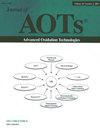Degradation of Cyanide using Stabilized S, N-TiO2 Nanoparticles by Visible and Sun Light
Q Chemistry
引用次数: 8
Abstract
In this paper, cyanide degradation (at pH12) using S, N-TiO2 photo-catalyst, synthesized by sol-gel method, stabilizedon glass microbeads and scoria stones were investigated. The main raw materials were thiourea (Tu) as a source of S and N and tetra butyl orthotitanate (TBOT). The effects of S and N amount, visible and sun light, irradiation time and different initial cyanide concentrations (50, 100, 200 and 300 mg/L) on destruction of cyanide were studied. The S, N-TiO2 film with 0.25 g thiourea showed the best cyanide destruction in visible light. The results showed that cyanide (50 mg/L) was destructed up to 94% in visible light and approximately 100% in sun light by S, N-TiO2/glass microbead. The results also indicated 85% and 94% destruction in visible and sun light respectively by S, N-TiO2/scoria stone within 4 h. Finally, the S, N-TiO2 stabilized on glass microbeads can be effectively implemented as a new method for treatment of wastewater containing free cyanide under sun light.可见光和太阳光下稳定S, N-TiO2纳米颗粒降解氰化物的研究
本文研究了溶胶-凝胶法合成的S, N-TiO2光催化剂、稳定玻璃微珠和矿渣石在pH12下对氰化物的降解。主要原料为硫脲(Tu)和正钛酸四丁酯(TBOT)。研究了S和N用量、可见光和日光、照射时间以及不同初始氰化物浓度(50、100、200和300 mg/L)对氰化物破坏的影响。添加0.25 g硫脲的S, N-TiO2薄膜在可见光下氰化物破坏效果最好。结果表明,S, N-TiO2/玻璃微珠对氰化物(50 mg/L)在可见光下的破坏率高达94%,在太阳光下的破坏率约为100%。结果表明,S, N-TiO2/矿渣石在4 h内对可见光和日光的破坏率分别为85%和94%。最后,S, N-TiO2稳定在玻璃微珠上,可以作为一种处理日光下含游离氰化物废水的新方法有效实现。
本文章由计算机程序翻译,如有差异,请以英文原文为准。
求助全文
约1分钟内获得全文
求助全文
来源期刊
CiteScore
0.88
自引率
0.00%
发文量
0
审稿时长
1 months
期刊介绍:
The Journal of advanced oxidation technologies (AOTs) has been providing an international forum that accepts papers describing basic research and practical applications of these technologies. The Journal has been publishing articles in the form of critical reviews and research papers focused on the science and engineering of AOTs for water, air and soil treatment. Due to the enormous progress in the applications of various chemical and bio-oxidation and reduction processes, the scope of the Journal is now expanded to include submission in these areas so that high quality submission from industry would also be considered for publication. Specifically, the Journal is soliciting submission in the following areas (alphabetical order): -Advanced Oxidation Nanotechnologies -Bio-Oxidation and Reduction Processes -Catalytic Oxidation -Chemical Oxidation and Reduction Processes -Electrochemical Oxidation -Electrohydraulic Discharge, Cavitation & Sonolysis -Electron Beam & Gamma Irradiation -New Photocatalytic Materials and processes -Non-Thermal Plasma -Ozone-based AOTs -Photochemical Degradation Processes -Sub- and Supercritical Water Oxidation -TiO2 Photocatalytic Redox Processes -UV- and Solar Light-based AOTs -Water-Energy (and Food) Nexus of AOTs

 求助内容:
求助内容: 应助结果提醒方式:
应助结果提醒方式:


